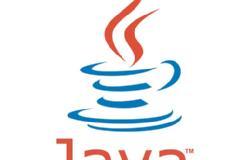Overview: This course is designed for software developers, computer science students, and IT professionals who are looking to deepen their understanding of concurrency in programming. It is particularly beneficial for those who have a basic understanding of programming concepts and are eager to explore more advanced topics.
Who is this class for? The course is ideal for intermediate to advanced programmers who are familiar with at least one modern programming language (such as Java, Python, C++, or JavaScript). It's especially suited for those who wish to enhance their skills in writing efficient, scalable, and robust concurrent applications.
Course Objectives and Learning Outcomes:
- Understanding Concurrency: Students will gain a solid understanding of what concurrency is, why it is important, and how it differs from parallelism.
- Concurrency Models and Patterns: The course will cover various concurrency models like threads, processes, actor model, and event-driven programming, along with patterns and best practices.
- Practical Implementation: Through hands-on exercises, students will learn to implement concurrency in different programming languages, focusing on common pitfalls and debugging techniques.
- Real-World Applications: The course will discuss real-world applications of concurrency, such as web servers, database management, and high-performance computing.
- Performance Optimization: Students will learn how to optimize concurrent programs, understand threading issues like deadlocks and race conditions, and how to resolve them.
Prerequisites: Participants should have a basic understanding of programming. Familiarity with concepts like loops, functions, and arrays is expected. Prior experience with object-oriented programming will be beneficial but not mandatory.
Materials Required:
- Laptop: Students are required to bring their own laptops with a preferred programming environment set up. Instructions for environment setup will be provided before the course commences.
- Software: Installation of specific development tools and IDEs (such as Visual Studio Code, Eclipse, or PyCharm) as per the programming languages used in the course.
- Course Material: Supplementary materials and resources will be provided, including slides, code examples, and reading lists.
Conclusion: By the end of this course, students will have a comprehensive understanding of concurrency in software development. They will be equipped with the skills to design, implement, and optimize concurrent systems, making them valuable assets in the field of software development.






